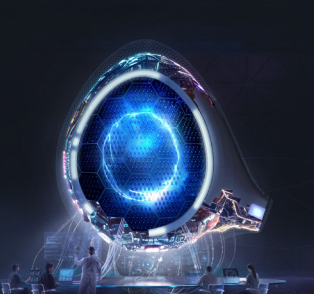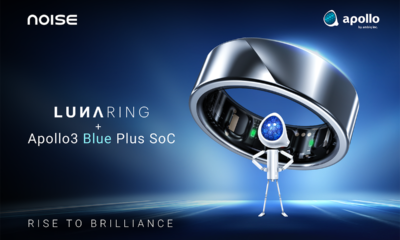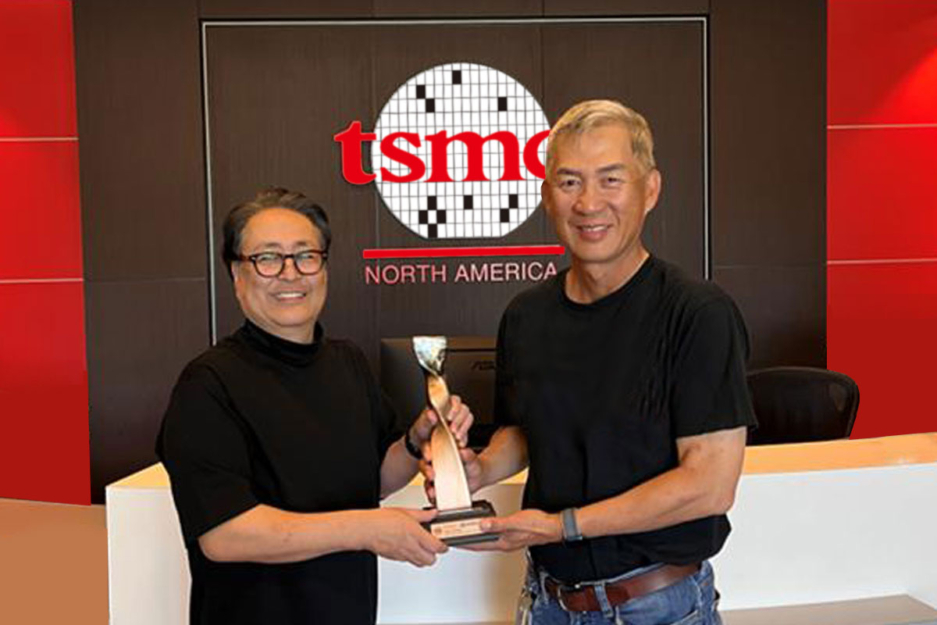
This growth aims to meet the growing requires with the sector and more boost Ambiq’s circuit style abilities. As Component of the growth, Ambiq is actively searching for regional talents to hitch its crew and assistance its global enlargement endeavors.
“The use of the Arm Cortex-M4 processor and Arm Artisan physical IP enables Ambiq to deliver an usually-on consumer working experience, such as prosperous graphics and voice processing, for endpoint devices wherever extremely-low electrical power intake is significant.”
Following this first manned flight would be Apollo two was, a replica of your Apollo one mission to offer NASA an opportunity to exam or revisit anything at all the primary crew might have missed.
The countdown demonstration check had been scheduled for September twenty but was quickly rescheduled to the 25th and did not begin right until the night with the 27th. By October 2 another two times were dropped to delays, but by October four it achieved launch minus 45 minutes. Then a pc unsuccessful, along with the count, reset to minus thirteen several hours ahead of launch, resumed on Oct nine. Much more Laptop and tools problems appeared. By then, the start crew was exhausted and a two-working day split was declared.
A Singapore-based mostly investor, EDBI are going to be viewed as a massive support for Ambiq’s regional enlargement programs since they participated while in the Series E funding spherical in 2018 that raised a complete of $28 million.
Rather simply just, good wearables are poised to travel the event of your industry for years to return.
To blame the pc for the Apollo 11 complications is like blaming the one who places a fire and calls the hearth Division. Essentially, the computer was programmed to perform more than realize mistake conditions. A whole list of recovery applications was integrated into your computer software.
Smart lighting units can even be put in place to show on and off instantly based upon user Choices or schedules.
But it wasn’t extensive ahead of this strategy fell outside of favour. With spacecraft 014, the spacecraft for Apollo 2, slipping badly at the rear of, a lot of began questioning the worth of flying a next Block I mission. There wasn’t a lot of the company could understand from a Block I flight that it could then implement towards the Moon-sure Block II missions. Apart from, NASA experienced extended deserted the apply of duplicating missions; not considering the fact that Gus Grissom followed in Al Shepard’s suborbital contrails in 1961 experienced NASA duplicated a mission.
By the end of April, the charred spacecraft 012 had been disassembled to discover the root with the incident as well as parts of Apollo were being slowly coming back together.
During the mission, the trigger was diagnosed since the rendezvous radar swap remaining in the wrong place, leading to the pc to course of action details from both the rendezvous and landing radars at the same time.[121][122] Computer software engineer Don Eyles concluded in the 2005 Steering and Command Meeting paper that the problem was because of a hardware style bug Formerly observed in the course of screening of the initial uncrewed LM in Apollo 5. Possessing the rendezvous radar on (so it was warmed up in case of an emergency landing abort) should have been irrelevant to the pc, but an electrical phasing mismatch concerning two aspects of the rendezvous radar procedure could bring about the stationary antenna to look to the pc as dithering backwards and forwards among two positions, based upon how the components randomly run up.
[a hundred and ten] Mission controllers experienced prepared to send Apollo 12's S-IVB into solar orbit right after separation through the Apollo spacecraft, but it's considered the melt away lasted much too long, and therefore did not deliver it close adequate for the Moon, so it remained in the hardly steady orbit throughout the Earth and Moon. In 1971, by way of a series of gravitational perturbations, it truly is thought to get entered within a solar orbit after which returned into weakly captured Earth orbit 31 a long time later on. It left Earth orbit again in June 2003.[111] See also[edit]
Armstrong then jumped onto the ladder's 3rd rung, and climbed into your LM. Following transferring to LM daily life aid, the explorers lightened the ascent stage for your return to lunar orbit by tossing out their PLSS backpacks, lunar overshoes, an empty Hasselblad digicam, and other gear. The hatch was closed yet again at 05:eleven:thirteen. They then pressurized the LM and settled all the way down to sleep.[163]
If it ended up to remain on the exact same trajectory because the spacecraft, the S-IVB might have offered a collision hazard, so its remaining propellants were being vented along with the auxiliary propulsion system fired to maneuver it absent. For lunar missions ahead of Apollo thirteen, the S-IVB was directed toward the Moon's trailing edge in its orbit so which the Moon would slingshot it past earth escape velocity and into photo voltaic orbit.

Get Smart. Use Less Energy.
Ultra-low power SoCs for IoT endpoint devices
that demand complex operations
and longer battery life.
✍ Ambiq® is committed to further improve the quality of life by enabling the intelligence of endpoints while further reducing carbon footprints. Ambiq – your partner in endpoint intelligence.
✯✯✯Based in Low Power Semiconductors Austin, San Jose, Hsinchu, Shenzhen, and Shanghai, our leadership and management teams consist of advocates, builders, enthusiasts, entrepreneurs, explorers, incubators, inventors, pioneers, protectors, thinkers, and visionaries. With a diverse spectrum of experiences and skillset, we came together and united with one goal to enable the true Internet of Things where the battery-powered endpoint devices can truly be connected intuitively and intelligently 24/7.
Ambiq Wins the Demo of the Year Award at 2023 TSMC Technology Symposium
September 7, 2023, Austin, TX – Ambiq®, a leading developer of ultra-low-power semiconductor solutions that deliver a multifold increase in energy efficiency, was awarded the Demo of the Year Award by TSMC as a participant of the Innovation Zone at the 2023 TSMC North America Technology Symposium.
Ambiq Wins the Demo of the Year Award at 2023 TSMC Technology Symposium
During the April event, Ambiq showcased various product design wins using TSMC’s 22nm technology in wearables, digital health, smart home, Industrial IoT, pet trackers, and retail segments, with industry-leading energy efficiency. Ambiq also featured two live demos emphasizing its leadership in enabling endpoint AI with its HeartKit™ for remote patient monitoring and its graphics display capabilities for a vivid user interface.

TSMC pioneered the pure-play semiconductor foundry business model when it was founded in 1987, helping startup companies accelerate their innovations by providing access to the industry’s leading process technologies and manufacturing capacity. Since 2021, TSMC has expanded that mission with an Innovation Zone at its worldwide Technology Symposiums, highlighting how TSMC partners with startup companies to enable cutting-edge products from various applications, including high-performance computing, communication, automotive, IoT, and consumer segments.
“We’re grateful to TSMC and our booth visitors for allowing us to share our energy-efficient technology and processor solutions with them,” said Ambiq’s CEO, Fumihide Esaka. “We’re moving towards an exciting frontier of AI becoming more engrained with our daily lives. With that vision on the horizon, we will continue to develop innovative and first-of-its-kind ultra-low-powered solutions that keep innovation and sustainability in mind.

Ambiq’s mission is to develop the lowest-power semiconductor solutions to enable intelligent devices everywhere by developing the lowest-power semiconductor solutions to development board drive a more energy-efficient, sustainable, and data-driven world. Ambiq has helped leading manufacturers worldwide develop products that last weeks on a single charge (rather than days), while delivering a maximum feature set in compact industrial designs. Ambiq’s goal is to take Artificial Intelligence (AI) where it has never gone before in mobile and portable devices, using Ambiq’s advanced ultra-low power system on chip (SoC) solutions. Ambiq has shipped more than 200 million units as of March 2023.
Ambiq Designs Low-Power for Next Gen Endpoint Devices
Ambiq’s VP of Architecture and Product Planning, Dan Cermak, joins the ipXchange team at CES to discuss how manufacturers can improve their products with ultra-low power. As technology becomes more sophisticated, energy consumption continues to grow. Here Dan outlines how Ambiq stays ahead of the curve by planning for energy requirements 5 years in advance.
Ambiq Highlights From Embedded World 2024
Facebook | Linkedin | Twitter | YouTube
Comments on “apollo2 for Dummies”